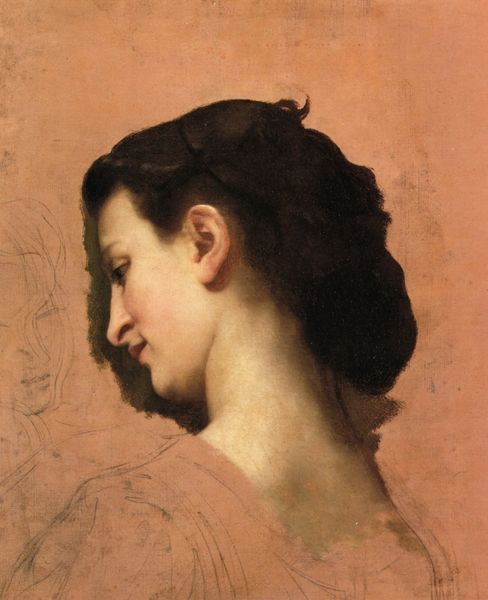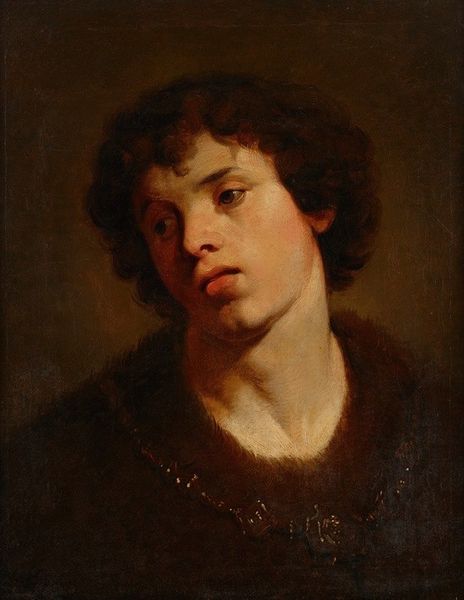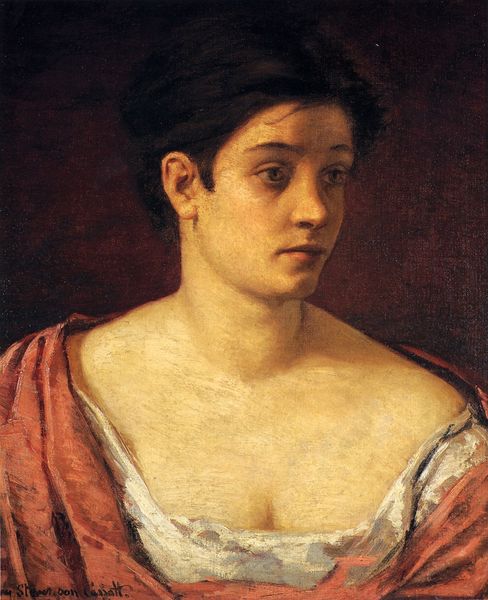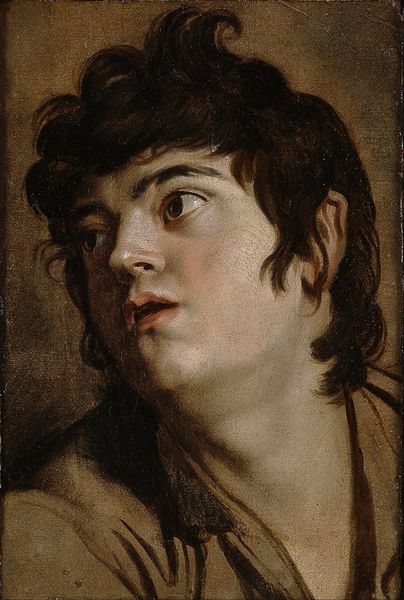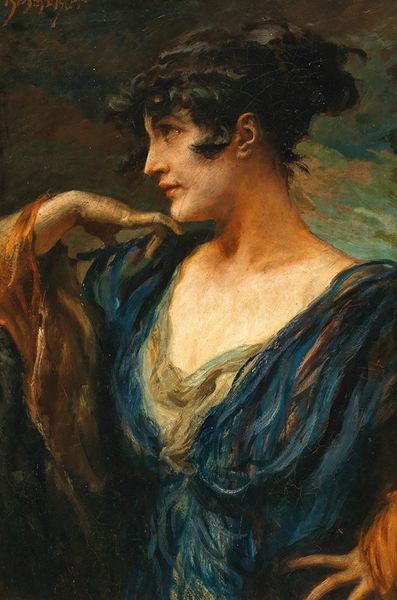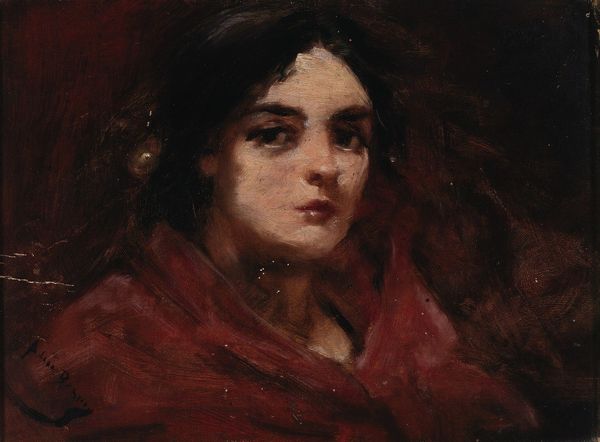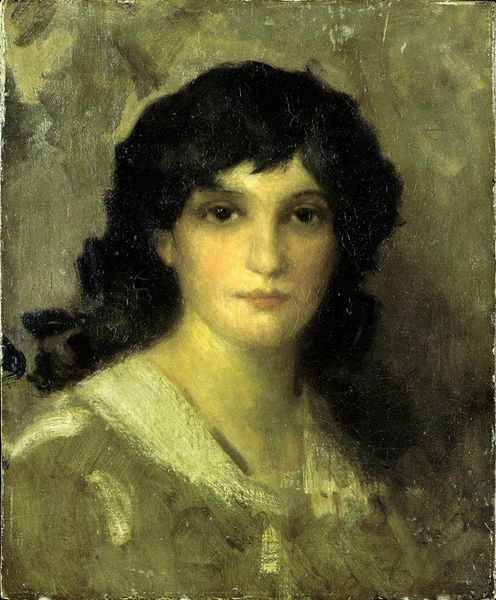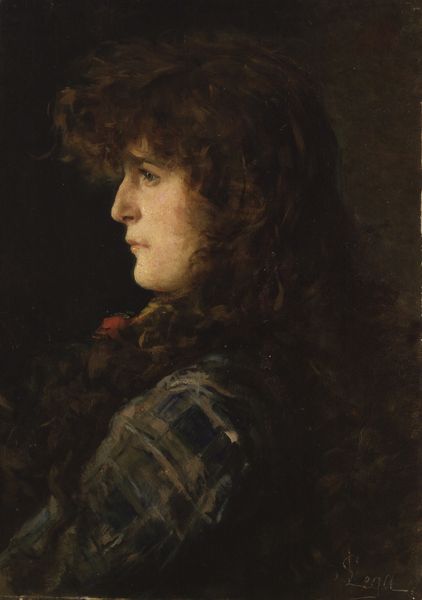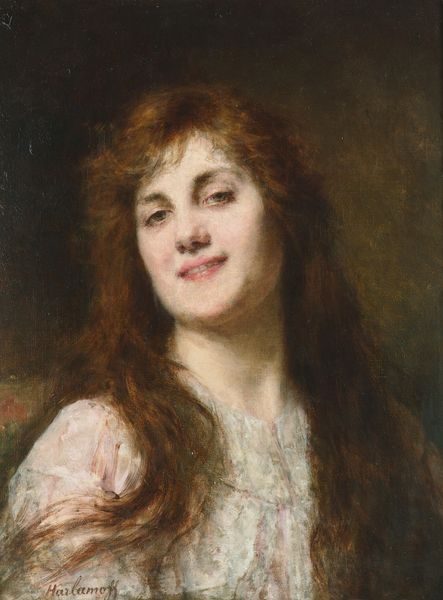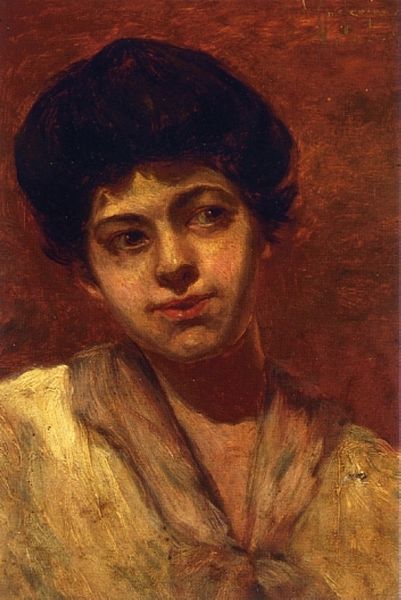
Copyright: Public Domain: Artvee
Curator: Let's consider "Verträumt," an oil painting dating back to about 1890 by Gabriel von Max. Looking at this, what strikes you initially? Editor: The stillness. It feels like a captured moment of introspection, a silent pause. The soft, muted colors and the subject's upward gaze contribute to a very pensive mood. Curator: Absolutely. Gabriel von Max, while considered within the academic tradition, often explored themes bordering on the occult and spiritualism, a response, perhaps, to the rapid industrialization of the era. His interest in evolutionary theory, for example, challenged traditional conceptions of identity. This painting, of a young woman lost in thought, connects with late 19th-century notions about feminine subjectivity and interiority. Editor: Her downcast gaze avoids our engagement directly. Is she supposed to symbolize some kind of emotional ideal? I’m immediately reminded of other romantic depictions of women throughout history. There’s a universality to this type of imagery. The loose hair and open white shirt have that era's symbolism of beauty and purity. Curator: In that period, a lot of female portraits were more about capturing this type of internal experience than an outer resemblance. You see echoes of Romanticism in the Symbolist movement, too, an emphasis on capturing the internal essence, the emotional reality, of the subject, even at the cost of literal accuracy. I see this with a contemporary lens when considering how the very nature of representation often marginalizes particular experiences, particularly in terms of class. Who even has the time for introspection like that, the type of dreamy thought? It is a commentary in and of itself. Editor: It certainly offers layers for interpretation. Thank you for shedding light on how it plays with established symbolisms. I can feel it more strongly. Curator: Thank you! Considering gender, race, and class here is illuminating.
Comments
No comments
Be the first to comment and join the conversation on the ultimate creative platform.
